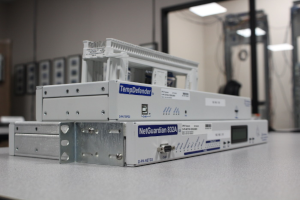You don't need to study SNMP on a theoretical level to implement it.
This guide helps you implement SNMP into your network.
1-800-693-0351
Have a specific question? Ask our team of expert engineers and get a specific answer!
Sign up for the next DPS Factory Training!

Whether you're new to our equipment or you've used it for years, DPS factory training is the best way to get more from your monitoring.
Reserve Your Seat TodayAfter completing Steps One and Two, you should now have a plan for:
Your next step is to make sure that you have the correct Management Information Base (MIB) files for all of your equipment.
MIB files have an elaborate inner structure, but you don't need to know too much about it to use them. The important thing to know about a MIB file is that it's a kind of dictionary or code book that is used to assemble and interpret SNMP messages.
Each type of device on your network has its own specific MIB file. The MIB file defines the device as a set of managed objects - values that can be read or changed by the SNMP manager.
The MIB file enables the SNMP manager to interpret trap messages from devices. To make sense out of a trap that's sent by a network element, the SNMP manager needs to have access to the MIB that describes the format and content of the possible traps that the element can send.
To be available for the SNMP manager, the MIB file for each of your equipment types needs to be installed on the SNMP manager, a process that's called "compiling."
The network administrator in charge of the SNMP manager can handle the chore of compiling. All you need to do is ensure that the correct MIB file for each equipment type is collected and provided to the network administrator.
This is relatively simple, because MIB files are created and supplied by equipment vendors. The MIB file should have been provided on disk with your equipment; if it can't be located, contact your equipment vendor for assistance.
MIB files are equipment specific, so it's important to make sure that you have the correct MIB for your equipment type, model, and version number. This information should be documented by your equipment vendor.